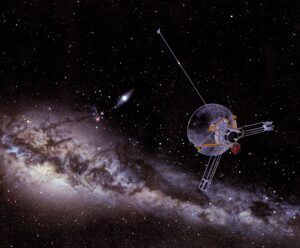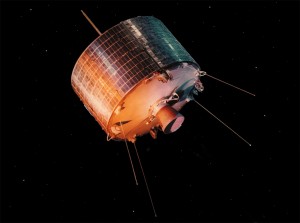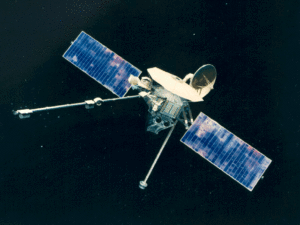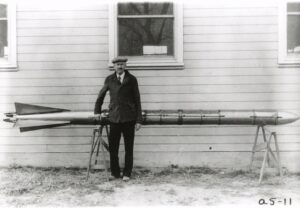Space Exploration
Columbia Lands
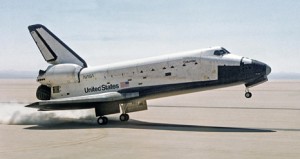
The first test flight of the first operational space shuttle, the Columbia, ends successfully as the orbiter lands at Edwards Air Force Base in California.
Houston, We’ve Had a Problem
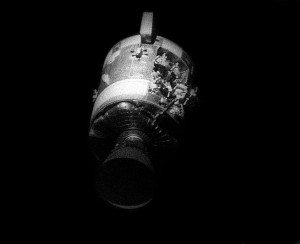
An oxygen tank aboard the Service Module of Apollo 13 explodes. Moments later, astronaut Jack Swigert announces the later-famous phrase, “Houston, we’ve had a problem here.” The explosion cripples the spacecrafts, resulting in a near-complete loss of electricity and oxygen. The oxygen leak will force the crew to abandon the command module for the lunar module as a makeshift “lifeboat” becoming stranded for four days, more than two hundred thousand miles from Earth, while NASA plans the most spectacular rescue mission in U.S. space history. Against all odds, the three astronauts will return safely back to Earth.
First Space Shuttle Launch
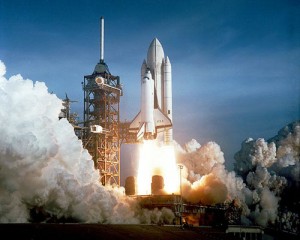
NASA launches the first Space Shuttle mission, STS-1, sending the Columbia on its maiden voyage. This mission intended to prove the feasibility of the Space Shuttles in specific, and reusable spacecraft in general. Originally set to launch on April 10th, problems delayed the launch by two days, which caused the launch to occur exactly 20 years after Yuri Gagarin became the first man to fly into space.
First Man in Space
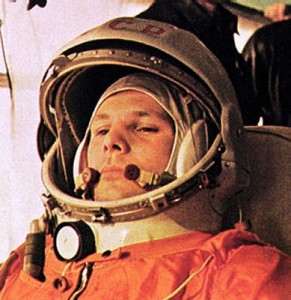
Yuri Gagarin, age 27, becomes the first man to orbit the Earth aboard the Soviet spacecraft, Vostok 1. He remains in space for an hour and forty-eight minutes before re-entering the atmosphere. This ultimately was Gagarin’s only space flight. He died on March 27, 1968 when the MiG-15 he was piloting crashed near Moscow. Reportedly, at the time of his death, Yuri Gagarin was in training for a second space mission.
The Mercury Seven
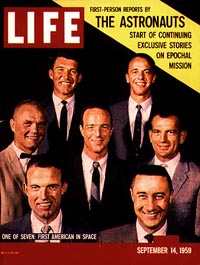
NASA announces the selection of the United States’ first seven astronauts, Scott Carpenter, Gordon Cooper, John Glenn, Gus Grissom, Wally Schirra, Alan Shepard, and Donald Slayton, The seven were chosen from 110 applicants to participate in the Mercury program, the nation’s first manned space program. The news media quickly dubs the group the “Mercury Seven.” On May 5th, 1961, Shepard will become the first American in space during the flight of Freedom 7.
Pioneer 11 Launched
NASA launches Pioneer 11, the second of two probes along with Pioneer 10 sent out to explore the outer solar system. Pioneer 11 became famous for being the first man-made object to fly by Saturn and also for making the closest flyby of Jupiter. After passing Saturn, Pioneer 11 continued on a trajectory towards the center of the Milky Way and will pass the star Lambda Aquila in 4 million years. The last contact with Pioneer 11 was in November of 1995. Both Pioneer spacecraft carry a plaque with a message from humanity in the chance that it is ever intercepted by intelligent life.
First Commercial Communications Satellite Launched
Intelsat I, the world’s first commercial communication satellite was launched into geosynchronous orbit above Earth. Built by the Hughes Aircraft Company, launched by NASA, and run by the Communications Satellite Corporation (COMSAT), Intelsat I was was nicknamed “Early Bird” and would go on to handle the first nearly instantaneous communications between Europe and North America. When activated in June of that year, Early Bird proved the feasibility of using synchronous satellites for commercial communications and handled telephone traffic, TV signals, telegraph, and faxes.
First Spacecraft to Orbit Moon
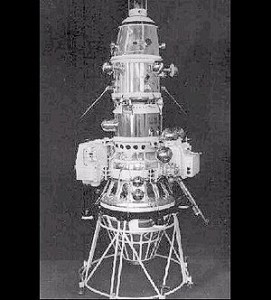
The Soviet space probe Luna 10 becomes the first spacecraft to orbit around the Moon. It was launched by the USSR from an Earth orbiting platform on March 31, 1966. Luna 10’s battery will operate for 460 lunar orbits before deactivating as planned on May 30, 1966.
First Flyby of Mercury
Mariner 10 becomes the first spacecraft to flyby the planet Mercury. At a range of 437 miles, Mariner 10 was able to send back the first close up images of Mercury indicating a Moon-like surface of craters and ridges. Until Mariner ran out of fuel and contact terminated about one year later, it made two more flybys of Mercury returning over 2,700 pictures of the innermost planet in our solar system.
Mariner 10 also was famous for many other firsts:
- The first spacecraft to use the gravity of one planet (Venus) to reach another (Mercury)
- The first spacecraft to return data on a long-period comet (Kohoutek)
- The first mission to explore two planets (Mercury and Venus) during a single mission
- The first spacecraft to use a gravity assist to change its flight path
- The first spacecraft to return to its target after an initial encounter
- The first probe to use the solar wind as a major means of spacecraft orientation during flight
First Gyroscope Controlled Rocket Launch
Robert Goddard, considered the father of modern rocketry, successfully launches the first gyroscope controlled rocket. His A-5 rocket flew to an altitude of 4,800 feet, flew horizontally for 13,000 feet and reached a speed of 550 miles per hour. Gyroscopic technology is critical for the stabilization of modern flight systems in airplanes and spacecraft.

